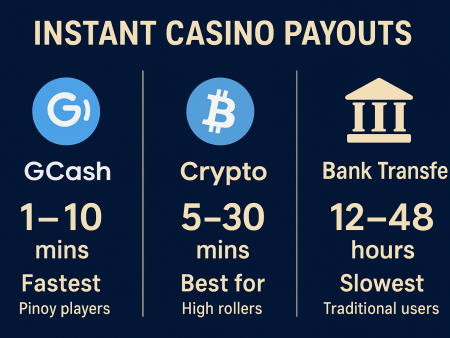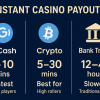East vs. West — the rivalry that defines League of Legends esports. Korea and China remain the heavy favorites, while Western teams fight to prove they belong on the same stage. For bettors, this gap means safer odds on LCK & LPL giants… but massive value on underdog upsets. Can the West finally close the gap, or will the East continue its reign?
Since the first-ever League of Legends World Championship in 2011, the competitive scene has been largely dictated by the East. South Korea dominated the early years with a string of world titles, before China rose to prominence with wins in 2018, 2019, and 2021. Most recently, the balance has tipped back to Korea, with legendary squad T1 securing back-to-back world championships, cementing their dynasty status.
For Western fans and bettors alike, the story has been frustratingly familiar. Teams from North America and Europe have shown flashes of brilliance—most notably G2 Esports’ miracle run in 2019—but no Western team has consistently stood toe-to-toe with the giants of the LCK (Korea) and LPL (China). Even now, when squads like FlyQuest and Movistar KOI show signs of resurgence, the question remains: can the West finally break through, or is the gulf simply too wide?
This in-depth breakdown examines the state of LoL esports in 2025, the root causes of the East–West divide, and how this impacts the world of esports betting, from odds-making to long-term futures wagers.
The Current LoL Landscape: Dominance Remains in the East
At events like MSI, Worlds, and the newly introduced First Stand tournament, Eastern teams remain the heavy favorites. Korean powerhouses such as Gen.G, T1, and Hanwha Life Esports consistently place at the top, while Chinese teams, despite being more volatile, still maintain a deadly reputation when firing on all cylinders.
Western squads occasionally pull off memorable upsets—G2’s recent victory over BiliBili Gaming at the Esports World Cup being a prime example—but these tend to be isolated surprises rather than indicators of lasting parity.
For bettors, this means Eastern teams typically enter tournaments with the shortest odds, while Western teams are often valued as underdogs. This dynamic creates both a challenge and an opportunity—backing a Western team at long odds can be rewarding, but the probability of a deep run remains slim.
Why the East Stays Ahead
The reasons for Eastern dominance are structural and cultural:
- Massive Player Base
- China alone accounts for more than half of LoL’s 130 million global players.
- South Korea, though smaller, has treated LoL as a mainstream competitive pursuit since its launch in 2009.
- China alone accounts for more than half of LoL’s 130 million global players.
- Elite Development Systems
- Both the LCK and LPL have well-established academy systems, producing young talent who either graduate to main rosters or are transferred to other teams.
- Early exposure to disciplined training ensures players reach peak skill faster.
- Both the LCK and LPL have well-established academy systems, producing young talent who either graduate to main rosters or are transferred to other teams.
- Cultural Emphasis on Success
- In Asia, esports is seen as a legitimate career path, with players receiving social and financial support.
- The competitive environment mirrors traditional sports, prioritizing results and discipline.
- In Asia, esports is seen as a legitimate career path, with players receiving social and financial support.
By contrast, Western regions—particularly North America—struggle with smaller player pools (15 million in NA, ~25 million in Europe) and less robust grassroots infrastructure. The volatility of ERLs (European Regional Leagues) and the decline of North American academy systems have made it harder to cultivate consistent, world-class talent.
Can the West Catch Up?
Bridging the gap requires both short-term tactical decisions and long-term structural changes:
- Short-term fixes for competitiveness:
- Western teams must maximize scrim time with Eastern squads ahead of international events.
- In-house scrims and better preparation strategies can prevent “leaking” strategies to rivals.
- Western teams must maximize scrim time with Eastern squads ahead of international events.
- Long-term structural growth:
- Investment in secondary rosters and academy systems to nurture new talent.
- Government or corporate backing to make esports a more viable career path.
- Expanding the Western player base through youth programs and grassroots tournaments.
- Investment in secondary rosters and academy systems to nurture new talent.
From a betting perspective, Western regions should be seen as occasional dark horses—capable of upsets but unlikely to sustain tournament-winning form. That said, spotting these opportunities (e.g., betting on G2 vs. Bilibili Gaming) can deliver high returns for bettors who follow team form closely.
Is True Parity Possible?
The gap isn’t likely to vanish overnight. Eastern regions have decades of cultural, structural, and competitive advantages that cannot be replicated in a few seasons. However, recent glimpses of Western excellence suggest the potential for closer competition.
For betting fans, this means two key takeaways:
- Eastern teams remain safe bets — back them for tournament winners, finals appearances, and MVP awards.
- Western teams offer high-risk, high-reward value — perfect for upset specials, handicap markets, and group-stage shockers.
Conclusion: What It Means for Esports Bettors
The East–West divide in LoL esports isn’t just about pride—it shapes the odds, markets, and betting strategies around every major international event. Korea and China will continue to be the favorites, but smart bettors will track Western teams for those rare, profitable breakthroughs.
As the West invests in better infrastructures and shifts its cultural approach to esports, the betting landscape could evolve too. Until then, international competitions remain defined by the chase—Eastern dominance, Western underdogs, and a global audience waiting to see if the balance of power can finally shift.

















